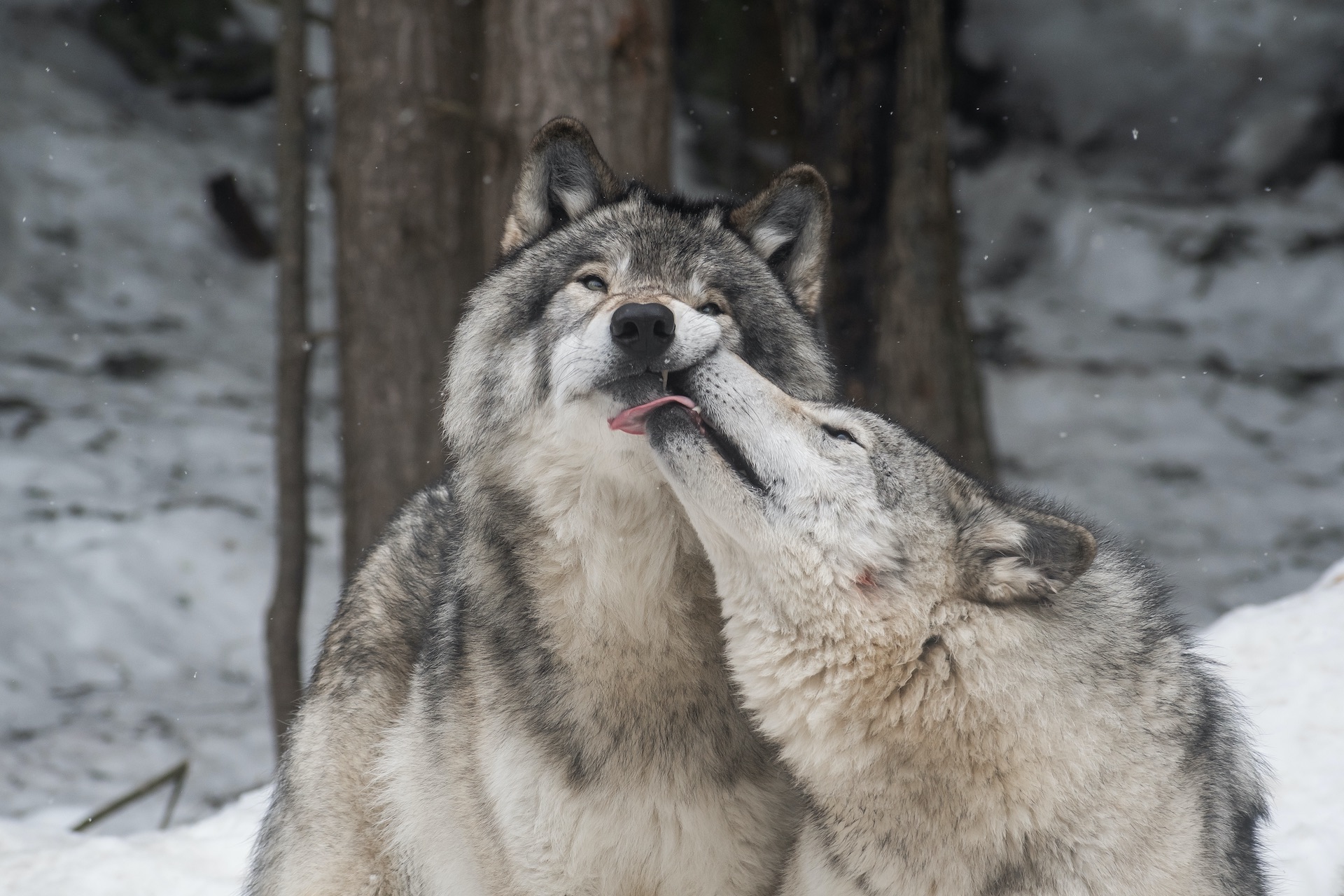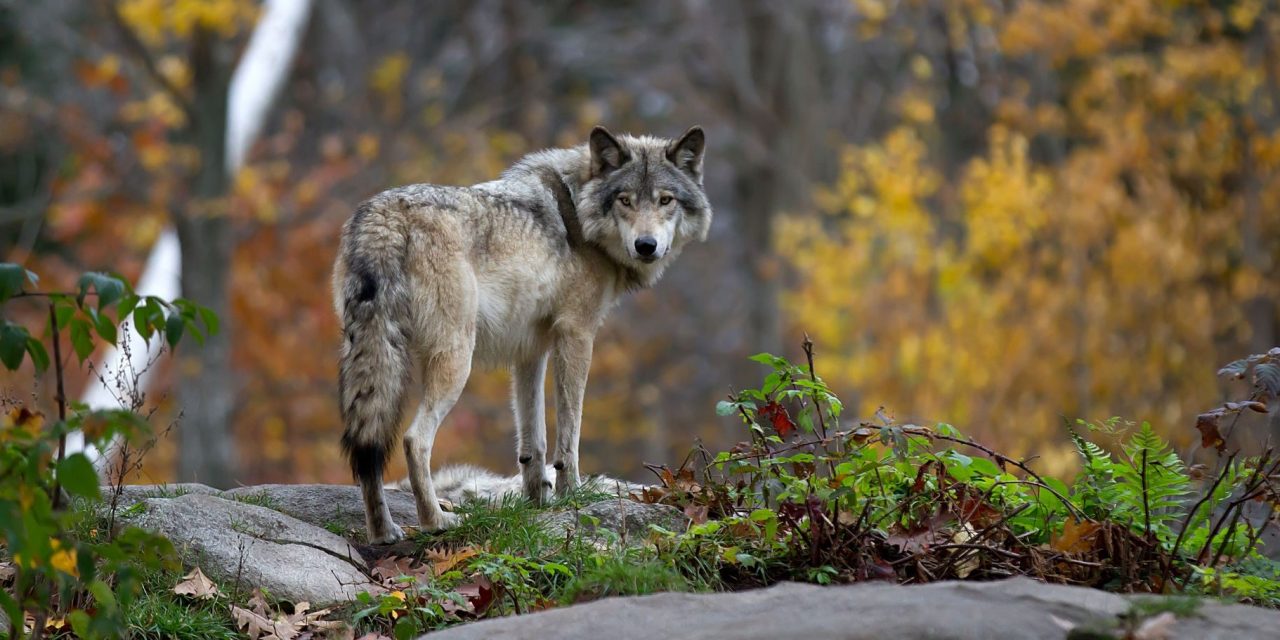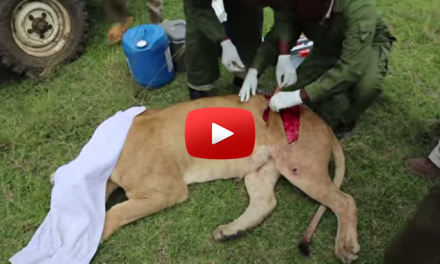Like sharks, wolves have an unfair reputation for being villains. Children grow up reading fairy tales about the “big bad wolf.” But in reality, these animals are generally not harmful to humans, as they shy away and avoid any interactions with us. They prey on everything from mice to muskoxen and play a key role in stabilizing ecosystems. Unfortunately, perceived as threats, these misunderstood mammals were hunted widely, resulting in a steep decline in their populations worldwide.
Thanks to conservation efforts, wolves are making a comeback. On August 13, the world celebrates these gorgeous animals on International Wolf Day to pay homage to their crucial contributions and bring attention to their plight.

Getting to Know Wolves
Wolves are ancestors of our domestic dogs and belong to the same family, Canidae. The adorable little fur ball currently snoozing on your couch was once a wild canine hunting for food, just like today’s wolves do. Despite sharing biological traits, dogs and wolves are different from one another.
Even within wolf populations, there are major differences. Ethiopian wolves are desert dwellers and weigh only about 25 pounds, while the northern gray wolves that inhabit the northern hemisphere can reach up to 136 pounds. The gray wolf is the most prolific wolf species in the world, with many living in parts of the United States, Canada, Europe and Asia. Arctic wolves and Australian dingoes are subspecies of wolves living in vastly different climates.
One of the most interesting things about wolves is the way they communicate by howling. This melodic vocalization, often represented on TV and in movies with the wolf at the edge of a cliff with its head held high toward the moon, sounds eerie and sad. However, wolves usually howl in a series of short, high calls in a chorus with other wolves. They do this to maintain pack unity. And while this is done at night, it’s not directed at the moon. A howl may be performed by a lonesome wolf who is lost from its pack, and they are also used to rally the troops for hunting or to emphasize territorial boundaries.

© Brad Josephs
Why Wolves Are So Crucial
Wolves live in packs as small as eight or as large as 30 or more, and members follow the lead of a female and male alpha. They are extremely territorial and have clearly defined boundaries to avoid inter-pack fighting. Within each group, they work together to hunt large animals, often going after the sickly or the elderly (another similarity they share with sharks). This keeps prey populations robust by allowing the healthiest individuals to reproduce and perpetuate their species.
Without wolves, ungulates (hoofed animals), their primary food source, become overpopulated and destroy the local vegetation. This affects other creatures in the ecosystem that depend on the trees, bushes and other vegetation. Eventually, the lack of vegetation for ungulates leads to their death by starvation.
Threats to the Gray Wolf
Wolves as we know them appeared on the planet about six million years ago and became the most widely dispersed mammal in the world (after humans), traveling to far distances into Russia, Asia and North America. When human populations increased, wolves became a competitor for food and thus a threat, leading to the elimination of wolves from large areas. Gray wolves, which once enjoyed large natural ranges across the Northern Hemisphere, came into conflict with cattle ranchers, who perceived them to be a threat to their livelihood.

© Brad Josephs
A long history of hunting and systematic eradication of the wolf population brought these animals to the brink of extinction. In the 1970s, only 500 to 1,000 wolves remained in the wild, with 95% of their range gone. Today, large populations of wolves are relegated to remote corners of the globe, such as the Arctic.
Gray Wolf Conservation
The Endangered Species Act of 1973 in the United States helped restore wolf populations. In 1995, in a historic conservation act, 41 wolves from the wilds of Canada and Montana were released into Yellowstone, our oldest national park.
By 2021, their number increased to 95, living within eight packs. Now, there are an estimated 500 wolves in the Greater Yellowstone Ecosystem.

The reintroduction of wolves in Yellowstone had a positive impact on the environment and led to a trophic cascade, a process by which the activity of an apex predator stimulates the growth of other animal species and increases biodiversity. In northern Yellowstone, elk reduction led to an increase in the height of willows (deciduous trees and shrubs), which provide critical habitat for several species of native animals such as beavers and moose.
Human-wildlife conflict, which resulted in the initial decline of wolf populations, is now being managed by implementing electric fences and guard dogs to protect livestock. However, negative perceptions of the wolf need to change, and for that, it’s important to celebrate these beautiful creatures and their contributions through celebratory days like International Wolf Day.
How Conservation Travel Can Help
Visitors hoping to spot these beauties in the wild have the best chance to do so on one of Nat Hab’s Yellowstone: Ultimate Wolf & Wildlife Safari or our Yellowstone Wolf & Wildlife Photo Expedition.
You’ll get the best wolf sightings during their peak activity at dawn and dusk, and there’s plenty to fill your days, from a horse-drawn sleigh through the National Elk Refuge to strolls among Yellowstone’s famous geyser basins and the white limestone terraces of Mammoth Hot Springs, where travelers often spot elk and other wildlife. Best of all, your trip helps fund conservation efforts to keep wolf populations thriving!
Help Protect Wolves
Conservation groups and local communities are working hard to protect these legendary animals. However, we can all help in several ways. Here are three ways to celebrate International Wolf Day today and every day:
- Adopt a wolf from World Wildlife Fund: By adopting/sponsoring a gray wolf, you will directly contribute to the conservation of the species. In addition to helping WWF protect these magnificent animals, a $60 Gray Wolf Adoption Kit gets you a plush version of the adopted animal, an adoption certificate, a full-color photo of the species and a spotlight card with information about the animal. You can also adopt an Arctic wolf or a red-maned wolf.
- Book an eco-friendly trip to see wolves in the wild: Our Yellowstone: Ultimate Wolf & Wildlife Safari helps conserve the species through conservation travel! This winter trip allows you to search for wolves in Yellowstone’s Lamar Valley—the Serengeti of America—alongside naturalists and scientific researchers.
- Get involved: Northern gray wolves recently regained their federal Endangered Species Act protections (except those in the Northern Rockies). Watch local and national news about legislation affecting wolves and make your voice heard by contacting your representatives on these issues.



































